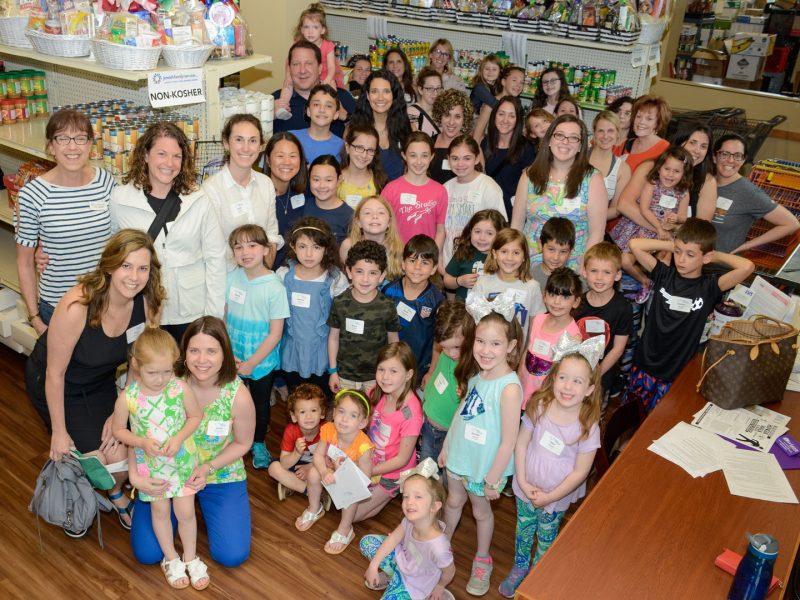Danielle V. Minson — Raising the Bar

Despite COVID-19 Setbacks, Federation and Foundation Build for Cincinnati 2030
The Cincinnati Jewish community is continuing its bold march into the future, despite challenges due to COVID-19. The Jewish Foundation of Cincinnati and the Jewish Federation of Cincinnati have recently begun guiding a coordinated and complementary vision for Cincinnati 2030, the Jewish community’s long-term vision process.
Cincinnati 2030 will be informed by data from the 2019 Cincinnati Jewish Community Study, which was commissioned by both organizations. The Federation has begun convening a community-wide strategic planning process with diverse professional and lay leaders, whose goal will be to create a shared community vision. This will include a value and vision statement that will guide community planning over the next ten years.
The committee is cochaired by Ari Cohen and Andy Berger, both of whom played vital roles in the development of the 2020 vision and community planning. “Despite the challenge of doing this exercise during COVID-19,” said Berger, “the committee has been quite intentional about what they see as vital for the continued growth and success of our community over the next decade.”
In January the Federation and Foundation began meeting with several agencies and congregations, presenting the highlights from the 2019 Jewish Cincinnati Community Study. Among the results, it found almost half of Jewish adults seek greater connection to Jewish life, the majority of whom never or rarely participated in any Jewish activity in the past year. In addition, many people experience barriers to connection.
While these trends are relevant to the entire community, they play out in meaningful ways with three particular populations:
- Interfaith families with children ages 0-17
- Families with young children ages 0-5
- Young adults without children
Foundation Executive Director Brian Jaffee said The Foundation would conduct focus groups to learn more about these three populations who are seeking a greater connection to the Cincinnati Jewish community. “Researchers will examine where people in these segments find meaning and challenge in their daily lives,” explained Jaffee, “and overlay this with how they view the Jewish community through opportunities and barriers to connection.”
“The Foundation hopes that the current research will translate into some future experimentation,” said Jaffee. “We envision this work to be supplementary to our current grant portfolio as we remain committed to funding core institutions and the people who frequent them.”
At the same time, the Federation and Foundation, along with some communal partners, has worked with Brandeis to create an Index of Economic Vulnerability (IEV). The IEV combines a set of measures that were reported in the original study and is based on the self-reported standard of living as well as a set of 12 indicators of economic risk. “This research has helped us identify who was at high to moderate risk before COVID-19,” explained Federation CEO Shep Englander.
When the pandemic hit, Brandeis University surveyed 15,000 respondents in ten other Jewish communities about their experiences between May 2020 and July 2020. “We then took that data and identified areas to investigate further in our community,” said Englander. He went on to explain that the study found, in general, those who were struggling before COVID-19 experienced the most financial hardship, and isolation was a pervasive theme.
“Those who are struggling are not the people that many traditionally think of as poor,” said Englander. “The vast majority are well educated with college degrees, most were employed before COVID, and a small number were retired.”
Englander said mental health issues due to social isolation are also a major concern. “The COVID-19 study, which was called ‘Building Resilient Jewish Communities: A Jewish Response to the Coronavirus Crisis,’ found the younger people are, the more at risk they are for emotional difficulties.”
Englander said the Federation would continue to leverage input from agencies, organizations, and community members to understand how the COVID-19 study findings have affected their planning and what more they would like to learn. “We also want to use lay leaders and community members to guide us on what opportunities and challenges we should focus on as we create a shared vision over the next ten years.”
“Cincinnati is fortunate to have two community funders in the Federation and The Foundation, which work together very well while remaining independent,” said Englander. He explained each organization is deployed in areas with the greatest strength and capacity, creating productive use of community planning resources. This approach also optimizes total community revenue, including community-wide fundraising.
“By marrying the work of the Federation as the community voice, values, and vision,” explained Englander, “with The Foundation’s clarifying data, and professional strength in research and impact assessment, we uncover the full spectrum of needs and determine how to best support the community. By working together, we can create a plan to build one of the most relevant, empowered, and connected Jewish communities in the United States.”

